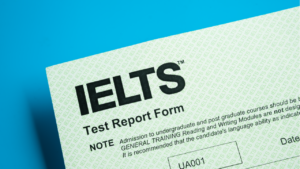Welcome to “The Forgotten Forests” IELTS reading passage answers guide.
This blog is designed to assist you in improving your reading skills for the IELTS test by providing you with the complete passage, various question types, and answers for the reading passage.
The passage is an essential part of the IELTS reading test, and mastering it can help you score higher in the exam.
IELTS Reading Test Overview
| Total Duration | 18 – 20 minutes |
| Number of questions | 13 |
| Types of Questions | Multiple Choice Questions, Table Completion, Short Answer Questions and Sentence Completion |
| Band Score Range | 0-9 |
By practising with the sample passage and its answers, you can improve your ability to manage your time, read fast, and choose the correct answers.
Leap Advantage Virtual Spot Offer Event on May 10th 2024

Last call to secure your spot for Masters in STEM Program in the US for Fall ’24 exclusively for graduates and above.
Leap Advantage Virtual Spot Offer Event on May 10th 2024
Last call to secure your spot for Masters in STEM Program in the US for Fall ’24 exclusively for graduates and above.

About the passage: The Forgotten Forests
Let’s discuss why it’s essential to understand and practise the reading passage on The Forgotten Forests.
- This passage is part of the IELTS reading test, aiming to check how well you can focus, manage your time, read fast, and understand what you read.
- They included this passage to see how you handle information and use what you know effectively.
- Practising with this passage is helpful because it makes you familiar with different question types and improves your skill in choosing the correct answers.
- Doing this exercise is valuable because it shows where you do well and where you can improve your band score.
You’re in the right place if you’re looking for answers about the reading passage from The Forgotten Forests.
Reading Passage
Below is the reading passage of The Forgotten Forests. Read it carefully and answer the questions. You can also find The Forgotten Forests Reading Answers below.
The Forgotten Forests
Found only in the Deep South of America, longleaf pine woodlands have dwindled to about 3 per cent of their former range, but new efforts are underway to restore them.
Paragraph A
THE BEAUTY AND THE BIODIVERSITY of the longleaf pine forest are well-kept secrets, even in its native South. Yet it is among the richest ecosystems in North America, rivalling tallgrass prairies and the ancient forests of the Pacific Northwest in the number of species it shelters. And like those two other disappearing wildlife habitats, longleaf is also critically endangered.
Paragraph B
In longleaf pine forests, trees grow widely scattered, creating an open, parklike environment, more like a savanna than a forest. The trees are not so dense as to block the sun. This openness creates a forest 1oor that is among the most diverse in the world, where plants such as many-1 powered grass pinks, trumpet pitcher plants, Venus flytraps, lavender ladies and pineland bog-buttons grow. As many as 50 different species of wildflowers, shrubs, grasses and ferns have been catalogued in just a single square meter.
Paragraph C
Once, nearly 92 million acres of longleaf forest nourished from Virginia to Texas, the only place in the world where it is found. By the turn of the 21st century, however, virtually all of it had been logged, paved or farmed into oblivion. Only about 3 per cent of the original range still supports longleaf forest, and only about 10,000 acres of that is uncut old-growth—the rest is forest that has regrown after cutting. An estimated 100,000 of those acres are still vanishing every year. However, a quiet movement to reverse this trend is rippling across the region. Governments, private organisations (including NWF), and individual conservationists are looking for ways to protect and preserve the remaining longleaf and plant new forests for future generations.
Paragraph D
Figuring out how to bring back the piney woods also will allow biologists to help the plants and animals that depend on this habitat. Nearly two-thirds of the declining, threatened or endangered species in the southeastern United States are associated with longleaf. The outright destruction of longleaf is only part of their story, says Mark Danaher, the biologist for South Carolina’s Francis Marion National Forest. He says the demise of these animals and plants is also tied to a lack of fire, which once swept through the southern forests on a regular basis. “Fire is absolutely critical for this ecosystem and for the species that depend on it,” says Danaher.
Paragraph E
Name just about any species that occurs in Longleaf, and you can find a connection to fire. Bachman’s sparrow is a secretive bird with a beautiful song that echoes across the longleaf flatwoods. It tucks its nest on the ground beneath clumps of wiregrass and little bluestem in the open under-story. But once the fire has been absent for several years and a tangle of shrubs starts to grow, the sparrows disappear. Gopher tortoises, the only native land tortoises east of the Mississippi, are also abundant in longleaf. A keystone species for these forests, its burrows provide homes and safety to more than 300 species of vertebrates and invertebrates ranging from eastern diamond-back rattlesnakes to gopher frogs. If fire is suppressed, however, the tortoises are choked out. “If we lose fire,” says Bob Mitchell, an ecologist at the Jones Center, “we lose wildlife.”
Paragraph F
Without fire, we also lose longleaf. Fire knocks back the oaks and other hardwoods that can grow to overwhelm longleaf forests. “They are fire forests,” Mitchell says. “They evolved in the lightning capital of the eastern United States.” And it wasn’t only lightning strikes that set the forest aflame. “Native Americans also lit fires to keep the forest open,” Mitchell says. “So did the early pioneers. They helped create the longleaf pine forests that we know today.”
Paragraph G
Fire also changes how nutrients flow throughout longleaf ecosystems in ways we are just beginning to understand. For example, researchers have discovered that frequent fires provide extra calcium to endangered red-cockaded woodpeckers, which is critical for egg production. Frances James, a retired avian ecologist from Florida State University, has studied these small black-and-white birds in Florida’s sprawling Apalachicola National Forest for more than two decades. When she realised female woodpeckers laid larger clutches in the first breeding season after their territories were burned, she and her colleagues went searching for answers. “We learned calcium is stashed away in woody shrubs when the forest is not burned,” James says. “But when there is a fire, a pulse of calcium moves down into the soil and up into the longleaf.” Eventually, this calcium makes its way up the food chain to a tree-dwelling species of ant, which is the red-cockaded’s favourite food. The result is more calcium for the birds, which leads to more eggs, more young, and more woodpeckers.
Paragraph H
Today, fire is used as a vital management tool for preserving both Longleaf and its wildlife. Most of these fires are prescribed burns, deliberately set with a drip torch. Although the public often opposes any type of fire—and the smoke that goes with it—these frequent, low-intensity burns reduce the risk of catastrophic concentrations. “Forests are going to burn,” says Amadou Diop, NWF’s southern forests restoration manager. “It’s just a question of when. With prescribed burns, we can pick the time and the place.”
Paragraph I
Restoring Longleaf is not an easy task. The herbaceous layer—-the understory of wiregrasses and other plants, also needs to be re-created. In areas where the land has not been chewed up by farming but converted into loblolly or slash pine plantations, the seed bank of the longleaf forest usually remains viable beneath the soil. In time, this original vegetation can be coaxed back. Where agriculture has destroyed the seeds, however, wiregrass must be replanted. Right now, the expense is prohibitive, but researchers are searching for low-cost solutions.
Paragraph J
Bringing back Long-leaf is not for the short-sighted, however. Few of us will be alive when the pines being planted today become mature forests in 70 to 80 years. But that is not stopping long-leaf enthusiasts. “Today, it’s getting hard to find long-leaf seedlings to buy,” one of the private landowners says. “Everyone wants them. Long-leaf is in a resurgence.”
Crack IELTS Exam in first attempt

Attend Leap’s free masterclass to get tips, tricks and advance strategies to crack IELTS exam in first attempt
Crack IELTS Exam in first attempt
Attend Leap’s free masterclass to get tips, tricks and advance strategies to crack IELTS exam in first attempt

The Forgotten Forest Reading Question & Answers
Let’s explore the sample questions below. The Forgotten Forests reading answers with explanations are given below.
Questions 1-5
Complete the notes below.
Choose NO MORE THAN TWO WORDS from the passage for each answer.
Write your answers in boxes 1-5 on your answer sheet.
Forest fire ensures that:
Birds can locate their 1 ________ in the ground.
The burrows of a species of 2 ________ provide homes to many other animals.
Hardwoods such as 3 ________ can grow and outnumber long-leaf trees.
Apart from fires lit by lightning:
Fires are created by 4 ________ and settlers.
Fires deliberately lit are called 5 ________
Answers with Explanation (1 – 5)
1. Nest
Reference
Paragraph E: It tucks its nest on the ground beneath clumps of wiregrass and little bluestem in the open under-story.
Explanation
The paragraph states that bird species found in the open and diverse longleaf pine woodlands tuck their nests on the ground beneath clumps of wiregrass and little bluestem in the open under-story, which is possible due to the parklike environment created by the widely scattered trees.
2. Tortoises
Reference
Paragraph E: A keystone species for these forests, tortoise burrows provide homes and safety to more than 300 species of vertebrates and invertebrates ranging from eastern diamond-back rattlesnakes to gopher frogs.
Explanation
The paragraph states that the gopher tortoise species found in the longleaf pine woodlands provide homes and safety to more than 300 species of vertebrates and invertebrates through their burrows.
3. Oaks
Reference
Paragraph F: Fire knocks back the oaks and other hardwoods that can grow to overwhelm longleaf forests.
Explanation
The paragraph states that oaks and other hardwoods can grow and surpass long-leaf trees in number.
4. Native Americans
Reference
Paragraph F: Native Americans also lit fires to keep the forest open,” Mitchell says. “So did the early pioneers.
Explanation
The paragraph states the significance of fires created by Native Americans and settlers for the longleaf pine woodlands. These fires played a crucial role in maintaining a diverse ecosystem.
5. Prescribed burns
Reference
Paragraph H: Most of these fires are prescribed burns, deliberately set with a drip torch.
Explanation
The paragraph states that most of these fires are prescribed burns, a name given to fires lit deliberately with a drip torch. Prescribed burns are the name given to fires that are deliberately lit. These fires are crucial in maintaining the longleaf pine woodlands and the numerous species that depend on it.
Questions 6-9
Complete the flowchart below.
Choose ONE WORD ONLY from the passage for each answer.
Write your answers in boxes 6-9 on your answer sheet.
How to increase the number of cockaded woodpeckers
Calcium stored in 6 ________
↓
Shrubs are burned
↓
Calcium released into 7 ________
↓
Travel up to the leaves
↓
8 ________ are eaten
↓
Number of 9 ________ increases
↓
More cockaded woodpeckers
Answers with Explanation (6 – 9)
6. Shrubs
Reference
Paragraph G: We learned calcium is stashed away in woody shrubs when the forest is not burned.
Explanation
The paragraph explains that calcium is stored in woody shrubs when the forest is not burned. This states the importance of fire in maintaining the longleaf pine forest ecosystem, as the calcium stored in shrubs is released back into the soil during fires, providing nutrients for the growth of plants and the survival of various species.
7. Soil
Reference
Paragraph G: But when there is a fire, a pulse of calcium moves down into the soil and up into the longleaf.
Explanation
The paragraph mentions how a pulse of calcium moves down into the soil and up into the longleaf when a fire occurs in the forest. This shows the importance of fire in the ecosystem and its impact on the soil and plant life.
8. Ant
Reference
Paragraph G: Eventually, this calcium makes its way up the food chain to a tree-dwelling species of ant, which is the red-cockaded’s favourite food.
Explanation
The paragraph states that calcium moves up the food chain to a tree-dwelling species of ant, the red-cockaded woodpecker’s favourite food. The passage also emphasises the importance of restoring the longleaf pine forest and protecting the species that depend on it.
9. Eggs
Reference
Paragraph G: The result: more calcium for the birds, which leads to more eggs, more young and more woodpeckers.
Explanation
The paragraph specifies how an increase in the calcium intake of birds leads to an increase in the production of eggs, young ones, and woodpeckers. It can be inferred that calcium plays a crucial role in the reproductive health of birds, which in turn affects the population of woodpeckers.
Questions 10-13
Do the following statements agree with the information given in Reading Passage 1?
In boxes 10-13 on your answer sheet, write
TRUE if the statement agrees with the information
FALSE if the statement contradicts the information
NOT GIVEN if there is no information on this
10 The sparse distribution of long leaf pine trees leads to the most diversity of species.
11 It is easier to restore forests converted to farms than forests converted to plantations.
12 The cost of restoring forests has increased recently.
13 Few can live to see the replanted forest reach its maturity.
Answers with Explanation (10 – 13)
10. True
Reference
Paragraph J: Bringing back Longleaf is not for the short-sighted, however. Few of us will be alive when the pines being planted today become mature forests in 70 to 80 years.
Explanation
The paragraph states that bringing back Longleaf is not for the short-sighted. It also mentions that few of us will be alive when the pines planted today become mature forests in 70 to 80 years. Therefore, the answer is true.
11. False
Reference
Paragraph J: Interest among private landowners is growing throughout the South, but restoring longleaf is not an easy task.
Explanation
The paragraph states that interest among private landowners is growing throughout the South, but restoring longleaf is not easy. Therefore, the statement given is False.
12. Not given
Reference
Paragraph A to Paragraph J the passage talks about
Explanation
The answer is Not Given, as no information in the passage will tell us whether the cost of restoring forests has increased.
13. True
Reference
Paragraph J: Few of us will live when the pines planted today become mature forests in 70 to 80 years.
Explanation: The answer is true because the paragraph states that few of us will be alive when the pines planted today become mature forests in 70 to 80 years.
Tips for the IELTS Reading Test
Let’s delve into some tips and advice for the IELTS Reading Test.
1. Read Instructions Carefully:
Make sure to read all instructions before starting each section. Understand the format of the questions and how to record your answers.
2. Skim and Scan:
Quickly skim through the passage to get an idea of the topic. Then, scan for specific information when answering questions. It helps save time.
3. Practice Regularly:
Practice reading various types of texts in English, like articles and essays. It improves your comprehension skills and reading speed.
4. Manage Your Time:
Keep an eye on the clock and allocate time wisely for each section. Don’t spend too much time on one question; move on and return if needed.
5. Underline Key Words:
While reading the passage, underline or circle keywords. It helps you focus on the main ideas and find answers more quickly.
6. Guess if Unsure:
If you don’t know an answer, take your best guess. There are no penalties for wrong answers, so it’s better to try than to leave it blank.
7. Improve Vocabulary:
Enhance your vocabulary by learning new words. It makes it easier to understand and answer questions related to unfamiliar terms.
8. Practice Skimming Headings:
Practice matching headings to paragraphs. Skim the headings and get a sense of the main idea of each section before reading in detail.
9. Check Spelling:
Pay attention to correct spelling when transferring answers to the answer sheet. Incorrect spelling can result in lost marks.
10. Stay Calm and Focused:
Keep calm during the test. If you find a question challenging, take a deep breath, move on, and return to it later. Stay focused on the task at hand.
Conclusion
The IELTS Reading Test is pivotal in assessing one’s proficiency in understanding written English. It consists of three sections, each presenting unique challenges that demand careful time management and focused attention.
Remember, using the provided question paper to jot down notes is okay, but the final answers must be transferred onto the answer sheet.
Ultimately, success in the IELTS Reading Test is not just about language proficiency but also strategic test-taking skills. For those seeking expert guidance, Leap Scholar Counselling offers valuable support in IELTS preparation.
Frequently Asked Questions
-
Q. What is the importance of the IELTS Reading Test?
Ans. The reading portion of the IELTS exam is one of the most essential sections. Your ability to understand written texts, including their key concepts and supporting information, will be evaluated during the course. It assesses your cognitive ability to find out how well you understand what you read and how well you can locate crucial information in various written forms, like advertisements, emails, and articles.
-
Q. How many sections does the IELTS Reading test have in total?
Ans. The IELTS Reading test consists of three sections, each with a distinct writing assignment. The reading from sections one through three introduces you to a more significant number of technical vocabulary. Quickly review the questions to get a sense of what to expect. You can read more quickly and effectively using this. It will help you improve your overall performance and band score.
-
Q. How long does it take to finish the reading portion of the IELTS exam?
Ans. It takes one hour to complete the reading portion of the IELTS exam. It takes roughly twenty minutes to finish each section, which consists of thirteen to fifteen questions. This passage’s headings and subheadings require careful consideration. They might provide advice to assist you in selecting the structure and content.
-
Q. Can I write directly on the paper when taking the IELTS Reading test?
Ans. Since you can write directly on the test questions, there is no problem. You can write down, highlight, or circle the items appropriately to respond to the questions. Rereading the text will help you understand any terms that are unclear to you. It is provided to assist you in understanding the main idea.
-
Q. If you give incorrect answers in the Reading portion of the IELTS, would you lose points?
Ans. Giving fictitious answers on the IELTS reading test won’t hurt you. Try to answer rather than leave it blank because there’s a chance you could guess accurately. You will receive extra points for providing an accurate response. Concentrate on one question at a time to do well in the test. Put the matter off for now and return to it later.
-
Q. Can I use a pencil for the IELTS Reading test instead of a pen?
Ans. You can use a pencil or a pen to finish the IELTS reading portion. Using a pencil whenever necessary is the most effective technique to complete activities like matching data or filling in the gaps. They also utilise different terminology from what is used in the text. Looking for altered sentences or phrases that still make sense is essential.
-
Q. Will all of the readings you do for the reading portion of the IELTS transfer to college courses?
Ans. Contrary to popular belief, the IELTS Reading test measures more than general knowledge. You must also read news articles, magazine or book extracts, and scientific materials to pique public interest further. You must read and write about various topics to receive high marks. Using these talents can improve your proficiency and advance more quickly.
-
Q. I would like to sit for the IELTS reading exam. Can I review the materials once more?
Ans. You can review the material you have reread as you respond to the IELTS Reading test questions. The questions and answers will be provided promptly to ensure you get the required answers for each query. If you are unsure about the answers, you should circle the ones you know are incorrect. You have a better chance of selecting the appropriate option.
-
Q. I’m taking the IELTS reading test; must I read the passage to pass?
Ans. If you are rushed for time, it will take some time to read the entire chapter. You can swiftly go through the book and get the necessary knowledge to answer the questions by concentrating on what you need to know and skimming them. It is an excellent method for quickly finishing the passage. Take note of the details as you read it. To get the correct response, focus more intently on critical questions.
-
Q. To prepare for the IELTS Reading test, I would like to read. I want to read, but can I take notes?
Ans. You can take notes while reading this section of the IELTS Reading test. You can use these notes to assist you in remembering crucial information, an argument’s essential points, or anything else that will help you react expertly. It is imperative to remember that the word count at your disposal for your comments is just as important. That is all needed if the question only requires one word to be answered.
-
Q. What guidelines should I adhere to when responding to questions on language use on the IELTS Reading test?
Ans. You can respond in your own words to questions in the reading section of the IELTS exam. But it’s imperative that your response precisely matches the information in the text. The item might be changed and clarified to demonstrate your understanding of it. As you practise taking the test, your performance will improve. You might become more accustomed to the various question types by taking practice examinations.







